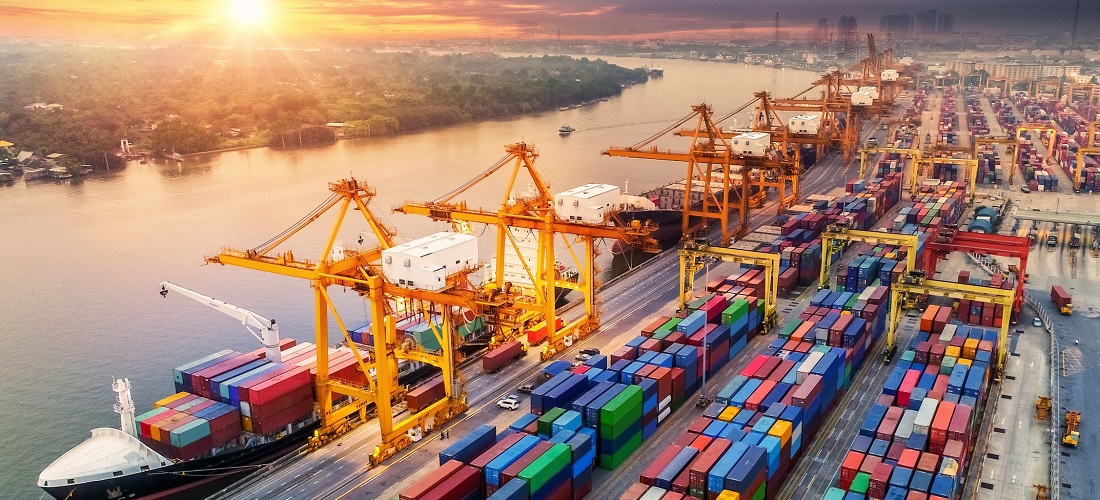
Brazil Sets Record for Exports to the U.S. Ahead of Trump’s Inauguration
Jan, 16, 2025 Posted by Denise VileraWeek 202503
The Trade Monitor, a quarterly publication by AmCham Brazil, revealed on Thursday, January 16, that Brazilian exports to the United States hit a record $40.3 billion (approximately R$242.5 billion at current exchange rates) in 2024, surpassing the $40 billion mark for the first time. This milestone comes just days before Donald Trump’s inauguration as he returns to the White House on Monday, January 20. Trump’s new term promises to disrupt global trade, with tariff increases and potential friction with President Luiz Inácio Lula da Silva’s administration.
Export volumes also reached unprecedented levels, totaling 40.7 million tons, a 9.9% increase compared to 2023, according to Amcham.
Exceptional Performance in the Global Context
While Brazil’s overall global exports declined by 0.8% in 2024, sales to the United States grew by 9.2%, outpacing performance in other key markets: the European Union (+4.2%), China (-9.5%) and Mercosur (-14.1%).
“Trade with the United States generated significant gains for Brazil’s economy in 2024, driving various productive sectors, especially industry,” said Abrão Neto, CEO of AmCham Brazil. He also highlighted that industrial product exports reached a record $31.6 billion, solidifying the United States as the top destination for high-value-added goods.
The trade flow between the two countries also reached a significant level, totaling $80.9 billion, an 8.2% increase compared to 2023 and the second-highest value in the historical series.
Brazilian Industry Shines
Brazil’s industrial sector’s performance was a highlight of bilateral trade in 2024. Exports from the sector reached a record $31.6 billion, a 5.8% increase compared to the previous year. The manufacturing industry accounted for 78.3% of all Brazilian exports to the U.S., maintaining the American market as the top destination for the ninth consecutive year, ahead of the European Union ($22.4 billion) and Mercosur ($18.8 billion).
Crude oil, aircraft, coffee, pulp, and beef were key products driving growth in 2024. Eight of the top 10 export items increased in value.
See below the month-over-month evolution of container exports from Brazilian ports to the United States, measured in TEUs. This information was derived from DataLiner.
Container Exports to US | Jan 2021 – Nov 2024 | TEUs
Source: DataLiner (click here to request a demo)
Export growth to the U.S. was notable across all sectors compared to Brazil’s global sales:
Agriculture: +36.9% (vs. a global decline of 11.0%)
Extractive industries: +21.1% (vs. +2.4% globally)
Manufacturing industries: +5.8% (vs. +2.7% globally)
Imports: Energy in Focus
Brazilian imports of U.S. products also increased, reaching $40.6 billion (+6.9%), resulting in a slight trade deficit. Notable imports included engines, non-electrical machinery, and aircraft, contributing to the second-highest value in historical imports, second only to 2022 ($51.3 billion).
The rise in natural gas imports was particularly significant, accounting for 55% of the total import growth. This surge was driven by droughts in some regions of Brazil, which impacted hydroelectric power generation and increased demand for thermoelectric energy.
Outlook for 2025
Projections for 2025 suggest sustained high levels of trade between Brazil and the United States, reflecting economic growth in both countries. According to the World Trade Organization (WTO), global trade in goods is expected to grow by 3% this year. The International Monetary Fund (IMF) projects U.S. GDP growth at 2.8% and Brazilian GDP at 2%.
“With growing demand in both countries, we expect trade flows in 2025 to remain robust, near the highest levels in recent history. However, it is crucial to monitor elevated international uncertainties,” cautioned Abrão Neto.
Trump’s victory in November sparked optimism in financial markets, with expectations of tax cuts and reduced regulations. However, in the long term, the protectionist policies that marked his first term could return with even greater intensity. Among his promises is the imposition of a minimum 10% tariff on all imports and a 60% tariff on Chinese products, which could provoke retaliatory measures and negatively impact global trade, including Brazil.
Additionally, Trump’s relationship with Lula is likely to face challenges. Trump’s alignment with former president Jair Bolsonaro and his opposition to Brazil’s environmental agenda could lead to friction. While Lula is set to host COP30 in Belém and lead the BRICS group, Trump is expected to disregard climate commitments and push back against using local currencies in international transactions, a policy supported by Lula’s administration.
These factors highlight the need for caution in managing trade relations between the two nations, which, despite potential adversities, remain one of the most significant trade flows for the Brazilian economy.
Source: Veja
-
Sugar and Ethanol
Dec, 30, 2021
0
India protests WTO’s sugar dispute resolution
-
Shipping
Sep, 12, 2019
0
Hapag-Lloyd online marine insurance
-
Ports and Terminals
Feb, 18, 2021
0
Ports of Paraná holds public hearing for PAR50 area
-
Meat
Jun, 22, 2021
0
China pig herd numbers indicate strong recovery


